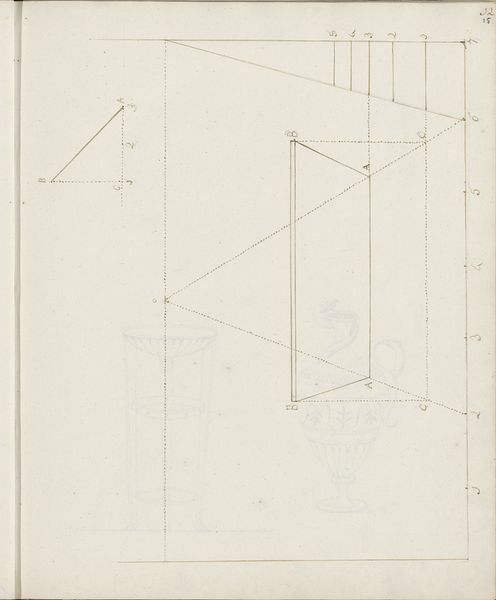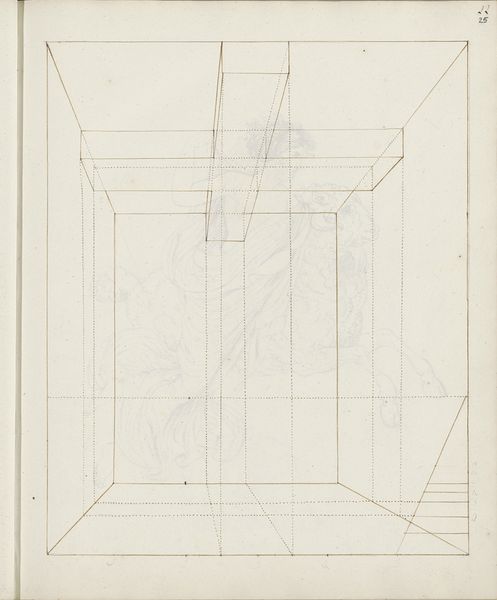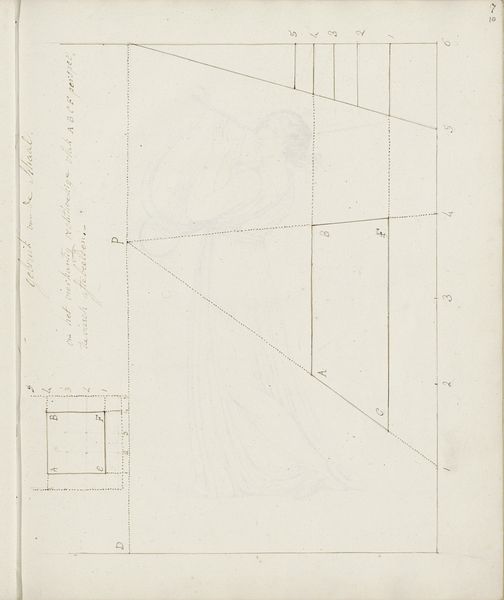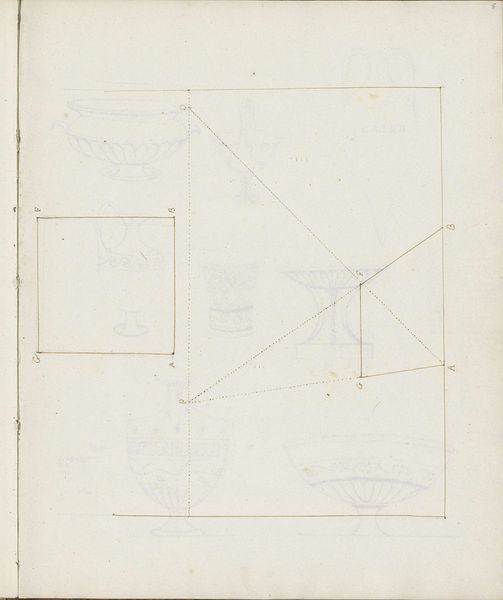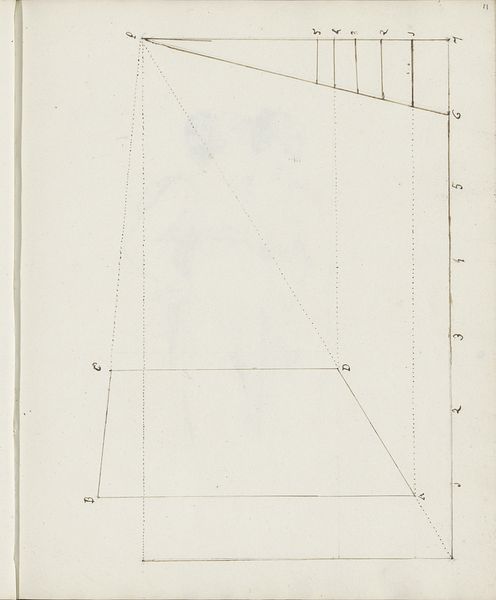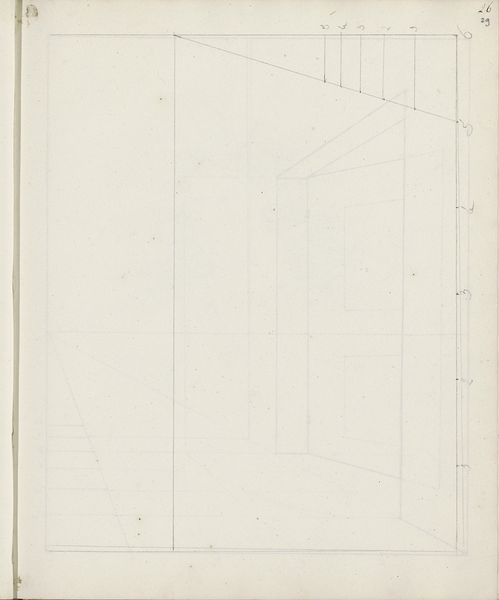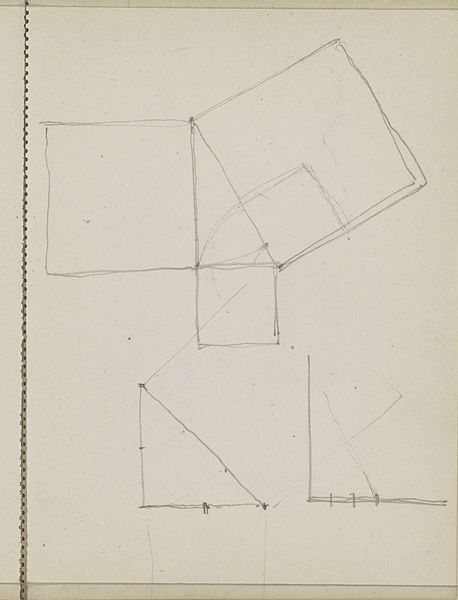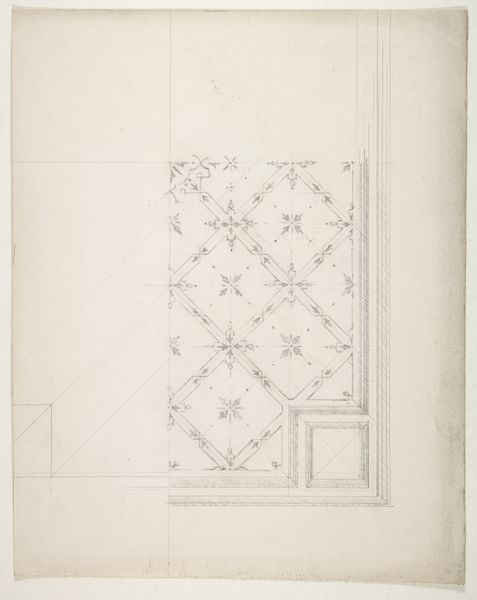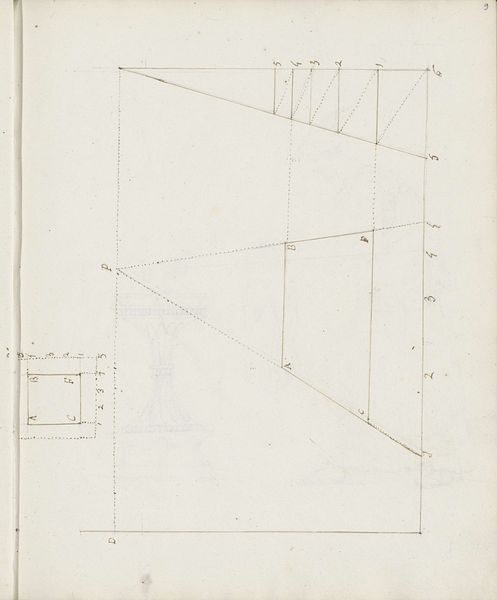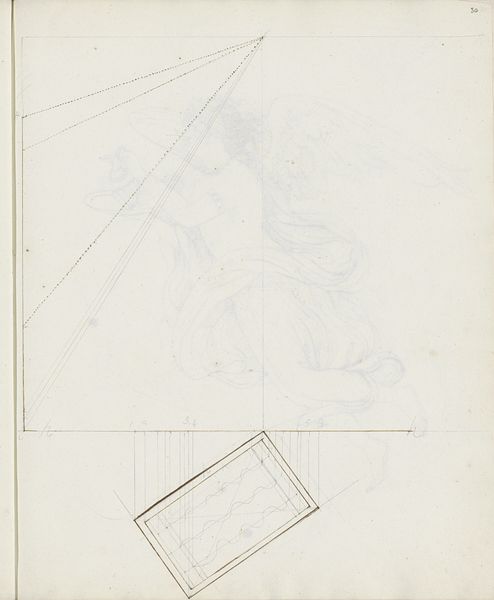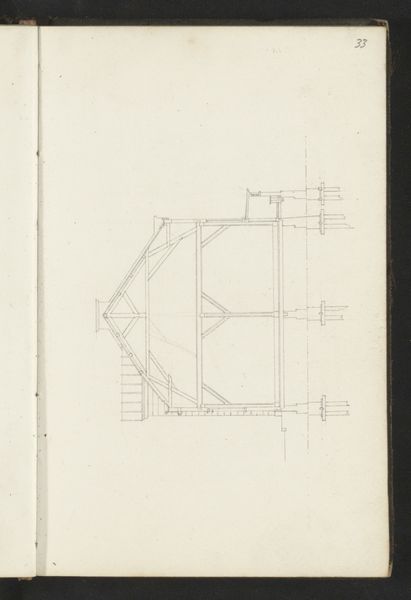
drawing, paper, ink
#
drawing
#
neoclacissism
#
perspective
#
paper
#
form
#
ink
#
geometric
#
line
Copyright: Rijks Museum: Open Domain
Curator: At first glance, it reminds me of those optical illusion drawings, Escher-esque, where up is down and logic takes a holiday. But stripped bare, almost intimidatingly. Editor: Indeed. We are looking at "Perspective Exercise with an Open Door," an 1813 ink drawing on paper by Catharina Kemper. A drawing demonstrating the principles of… well, perspective. Curator: Right! It’s the architecture of seeing. It feels very instructional, almost like a secret blueprint revealed, a guide to bending space. The numerical labels give it such a mathematical rigidity and at the same time seem so absurd to me, like trying to quantify feelings. Editor: It comes from a Neoclassical moment—think order, reason, and a renewed interest in classical antiquity. The drawing almost feels like an exercise in civic virtue, using artistic skill to reveal and uphold universal rules. Curator: But beyond that, I find it quite meditative. Those delicate lines tracing an impossible space; a door just hanging there. You're not meant to enter but rather linger in the liminal space. What lies beyond a set of meticulously drafted, very straight lines, do you suppose? It is as though, on some level, Kemper is doing more than diagramming perspective. The drawing becomes an inquiry into limits, even if only about our perceptual boundaries. Editor: Consider the social role such technical exercises had, especially for women artists of the era. Access to formal training was restricted; excelling at precisely these sorts of demonstrations, with their links to scientific thinking, could elevate the work and the artist, claiming space in fields of knowledge they were otherwise denied. It suggests artistic rigor. Curator: I wonder though, if Kemper, in all her precise calculation, ever felt confined by the very structures she mastered? Editor: It's a tension inherent in artistic training—finding freedom within the framework. These foundations provided them with skills that facilitated commissions that would have not been available otherwise. Curator: Maybe that’s what speaks to me, the silent struggle between rule and expression, like math meeting poetry in an echoing room. Editor: A fascinating glimpse, in any case, into the artistic practices and socio-cultural landscape of Kemper's time. Curator: I am now wondering, what's her next piece? What does she *do* with all of this mathematical precision? A great jumping-off point to appreciate art with many levels.
Comments
No comments
Be the first to comment and join the conversation on the ultimate creative platform.
